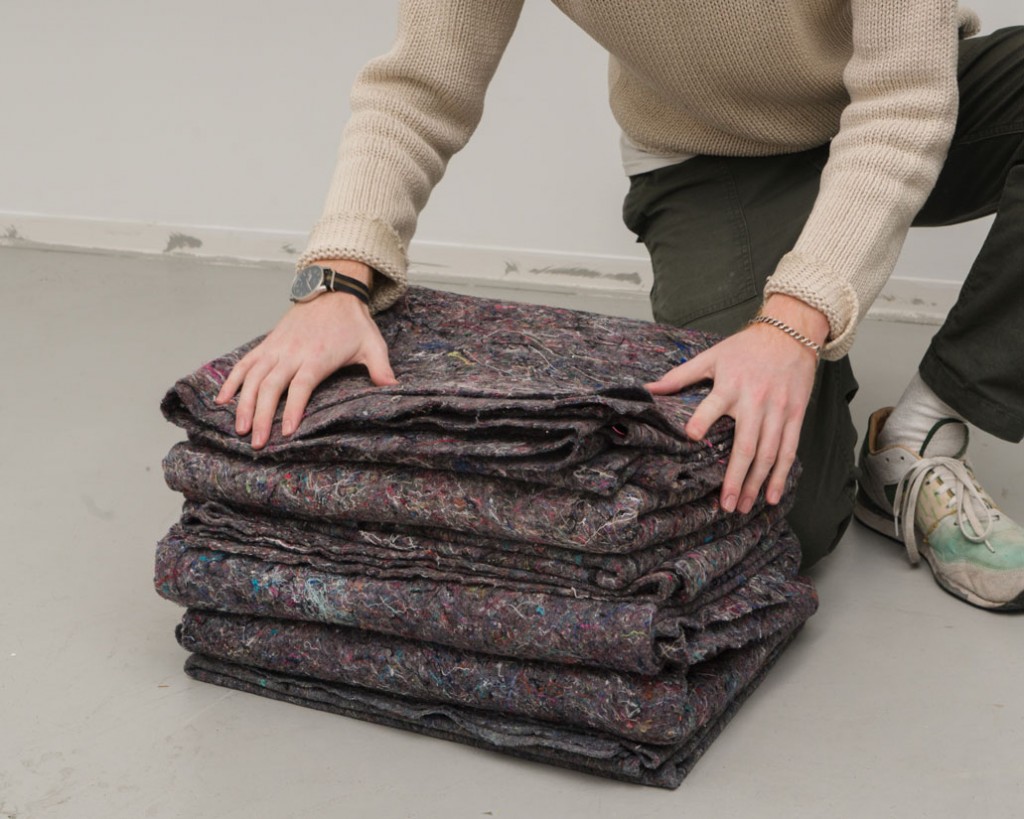It seemed like only yesterday when our curatorial team carried out an ambitious schedule of studio visits in the midst of the bitter winter cold. As we sought to understand the intentions behind each artist’s practice and to envision their forthcoming works for the MFA Show, I was excited just thinking about and imagining the artists’ works in the Sullivan Galleries. It seemed then that those were faraway fantasies. Just as spring’s warm temperatures had sprung up on Chicago, we were swept into the rapid development and crystallization of artists’ ideas. With both floor planning and the graduate critique week happening simultaneously in the middle of the spring semester, artworks began to quickly assume their form and assert their presence, lending shape and tone to a growing exhibition.
One of the privileges of being a Graduate Curatorial Assistant for the MFA Show is being involved in generative conversations with artists and witnessing this concretization of ideas. Seeing the transformation of nothing to something, it is amazing how the life of all exhibitions really begins in the artist’s studio. The MFA exhibition is only able to embark on its first stages of planning when ideas mature and coalesce into artworks. In a way, as each becomes more material, the life cycle of an exhibition is bound to being a few steps behind the life cycle of an artwork.
MFA artist Thomas Huston’s practice further articulate this secret life of artworks and exhibitions, infusing poetic immanence to otherwise mundane, everyday objects. As Huston’s Moving Blankets transports other artists’ works from their place of artistic production to the space of exhibition, they gain symbolic significance by enacting their functionality. Sharing the life cycle of the exhibition, the work is considered completed only after the exhibition ends and as Huston puts it, the collaborating works are returned. For a little while, when the exhibition is on view, they slip away from their functional identity as ordinary moving blankets, only to reassume it when the exhibition comes down. Through this process of caring for other artworks, the blankets are the residue of their own work while always presenting the potential for the process to begin once again.
It is undeniable that an ecology of dependency exist in these cycles of creation. Not only do artworks help to forge the identity of exhibitions, they can also draw attention to the specificities of the site that hosts them. The collaboration between MFA artists Frances Lightbound and Michael Rado promises an engagement with our understanding of how public-private markers subsist in our unconscious navigation of architectural spaces. Echoing Huston’s concept of the innocuous omniscient everyday object, Lightbound and Rado’s most recent interventions in Topographies of Defense at SAIC’s LeRoy Neiman Center Gallery invert the dynamics of space and object, presenting the exhibition space as the object on display. By stretching and blurring our expectations of the natural-artificial within heavily demarcated public spaces, the objects flicker between their public utilitarian role and our private imagination of them as art objects. By challenging our recognition of what the artists articulate as the “visual vocabulary” and “spatial logic” employed by these sites, we are constantly prodded to remember the forgotten personal and public narratives that have occurred.
Hence, amidst the flux of busy activity and creative energies, these artworks remind us that it is worthwhile to pause a while to imagine our lives as seen from the counter perspective of the objects and spaces that we spend so much of our time with. We ask ourselves what does the process of going through these cycles of creation look like.




